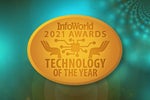InfoWorld’s 2021 Technology of the Year Award winners
InfoWorld celebrates the year’s best products in software development, cloud computing, data analytics, and machine learning.
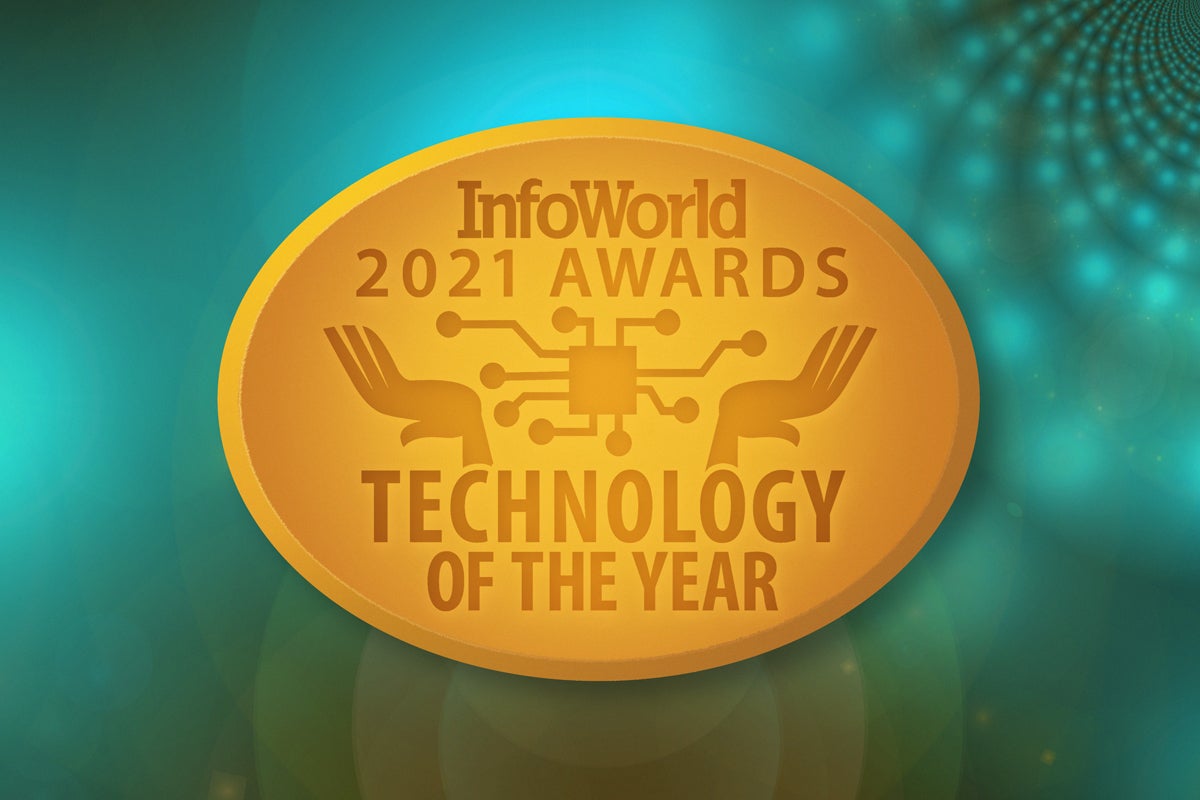
InfoWorld’s 2021 Technology of the Year Awards
What a long strange year it’s been. We barely got started on 2020 before the offices closed and we all learned a new acronym, WFH. We also learned that, freed of the daily commute and cut off from the office Kegerator, software developers worked even longer hours. Technology marched on—and we’re here to celebrate it.
InfoWorld’s 2021 Technology of the Year Award winners represent the best that a world of homebound software developers have to offer—to other developers, to data scientists, to IT shops, and to the companies they all serve. Among our 23 winners you’ll find dev and devops tools, machine learning tools, automation tools, state-of-the-art databases, and cutting-edge analytics platforms.
And in a nod to these unusual times, we include a few standout communications and collaboration tools that make it far, far easier to WFH.
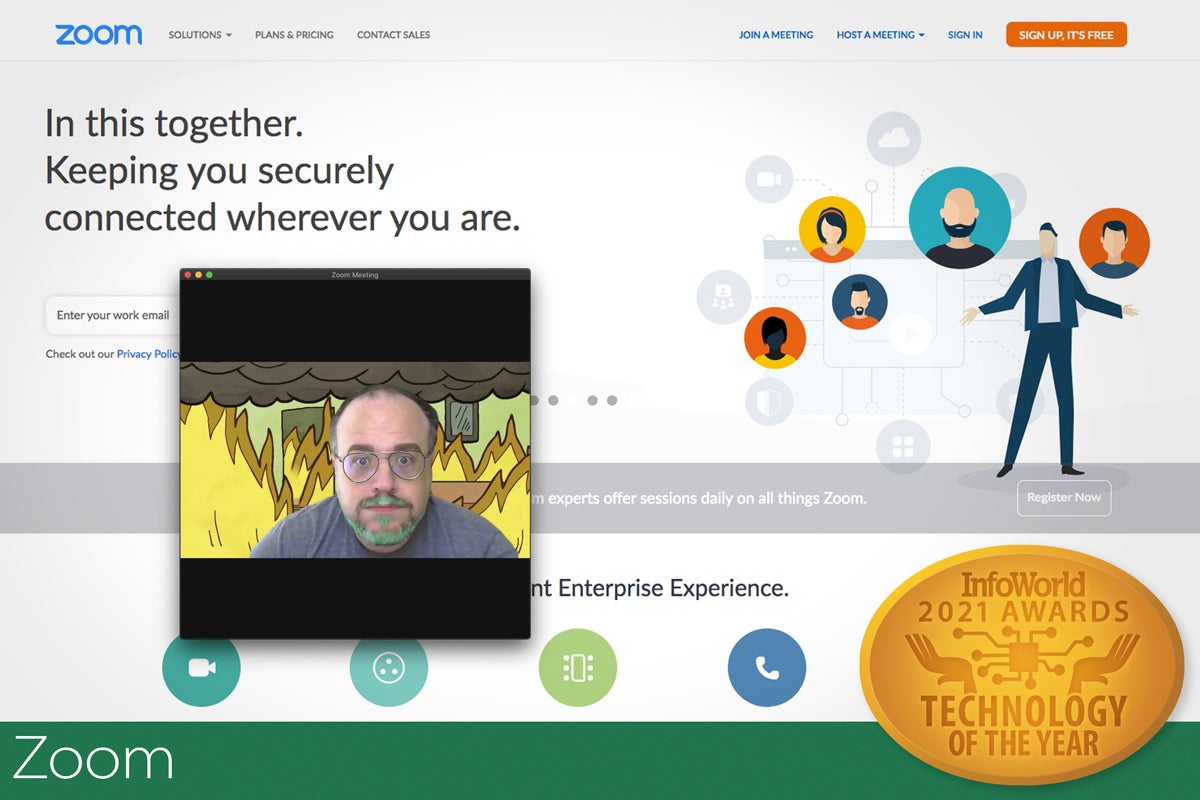
Zoom
2021 is starting like just a new season of 2020 by the same dismal writers. Your life and mine are on video conferencing software—preferably Zoom. If your company uses one of the other alternatives and you are on, say, Comcast, which charges extra after you use a TB, then they have already been in touch with you for their pound of flesh. Zoom seems to use the least bandwidth and to be the most stable. There were security issues at the beginning of the pandemic, but those seem to have abated.
Zoom was early to add virtual backgrounds without green screens, which allow you to hide your dirty office or garage or wherever you are working. Moreover, if you have middle-aged discrepancy fading your once lush eyebrows, you can add them back, complete with a green goatee and ruby red lips thanks to Zoom’s new filter feature. Zoom is simply life in the era of the pandemic. 2020 was the year of Zoom, and 2021 promises more of the same.
— Andrew C. Oliver
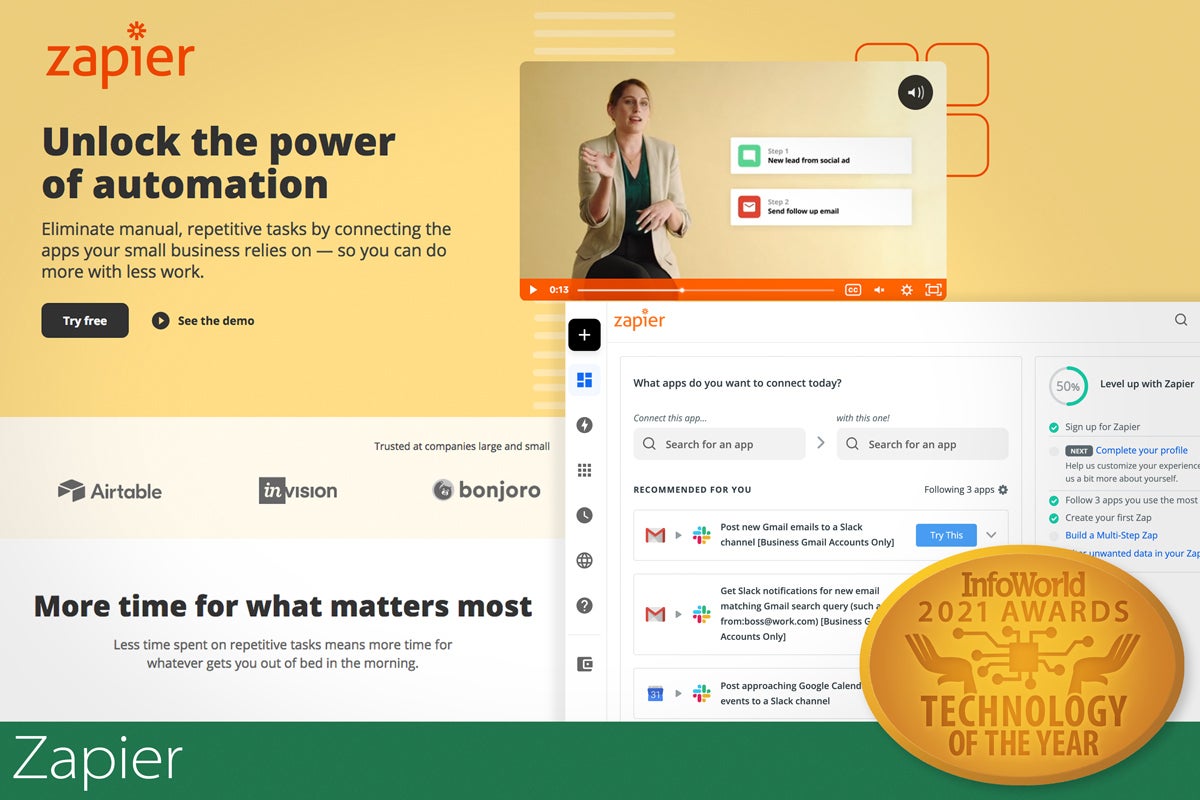
Zapier
One of the fastest and easiest ways to validate a SaaS API is to review what triggers and actions Zapier supports. The web-based automation platform has more than 3,000 integrations, so if the API for a mainstream application exists, then chances are good it’s on Zapier.
Using Zapier’s no-code tools to prototype, develop, and deploy integrations runs circles around hard coding to APIs and webhooks. Zapier is built on the if-this-then-that pattern with triggers that signal changes such as adding, changing, or deleting records and actions that can push data to other systems or kick off workflows. These integrations can include multistep transformations where data from a trigger get transformed, filtered, and run through multiple paths to different actions.
Zapier also provides testing capabilities that let developers validate Zaps before they’re enabled, and operational tools that alert on errors and allow reprocessing after a failure. And be sure to check out Zapier’s blog for a world tour of SaaS integration possibilities. It’s a mix of industry-specific ideas, integration tips, and information on the best apps. You’ll find both ideas and inspiration.
— Isaac Sacolick
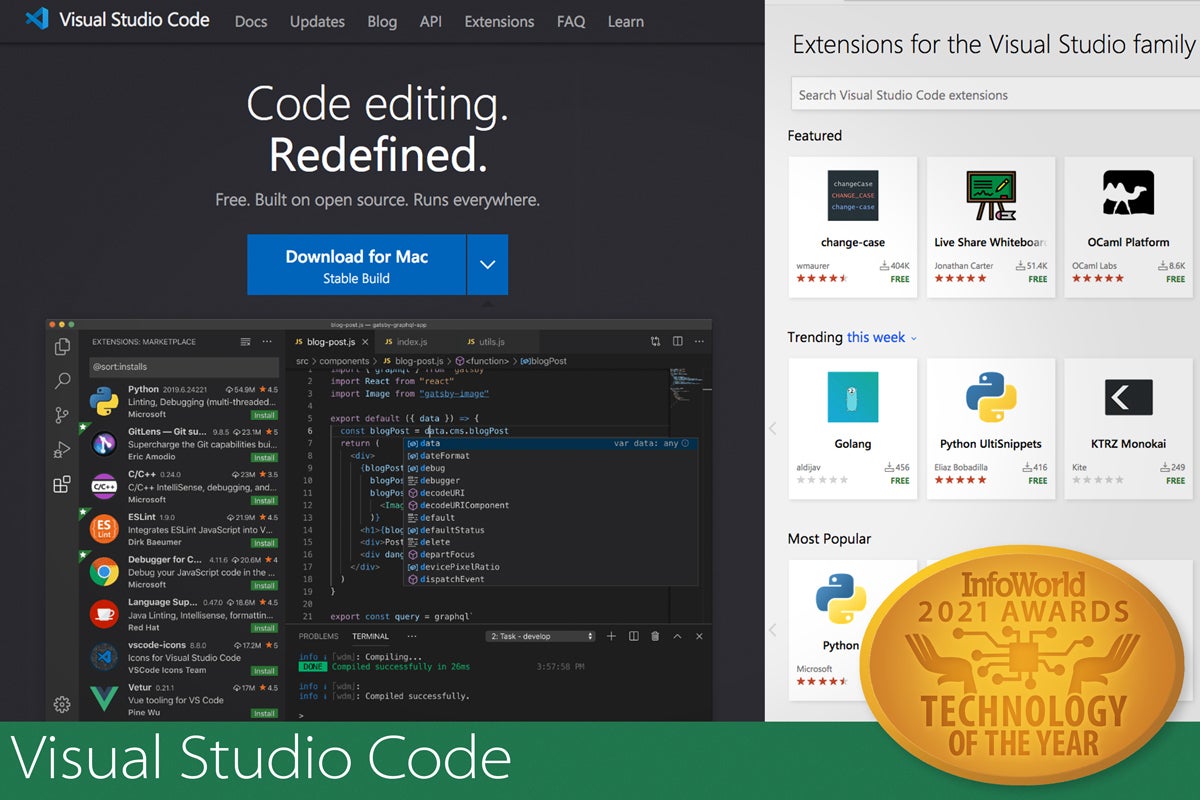
Visual Studio Code
No software developer could miss the meteoric ascent and explosive growth in popularity of Visual Studio Code in the last few years—and few could resist its charms.
VS Code is a flexible, cross-platform editor that can be scaled up or down to fit any job. A vast ecosystem of extensions allows you to make it into an IDE for every major programming language, edit every conceivable text or data format, integrate with remote development and deployment resources, work seamlessly with version control, and do so much more.
The best thing about VS Code is its relentless and metronomic development pace: New features, refinements, and intriguing experiments turn up monthly. If in time this steady progress turns VS Code into Microsoft’s default environment for all software development, eclipsing the legacy Visual Studio IDE, we might not be all that surprised. But we would be thrilled.
— Serdar Yegulalp
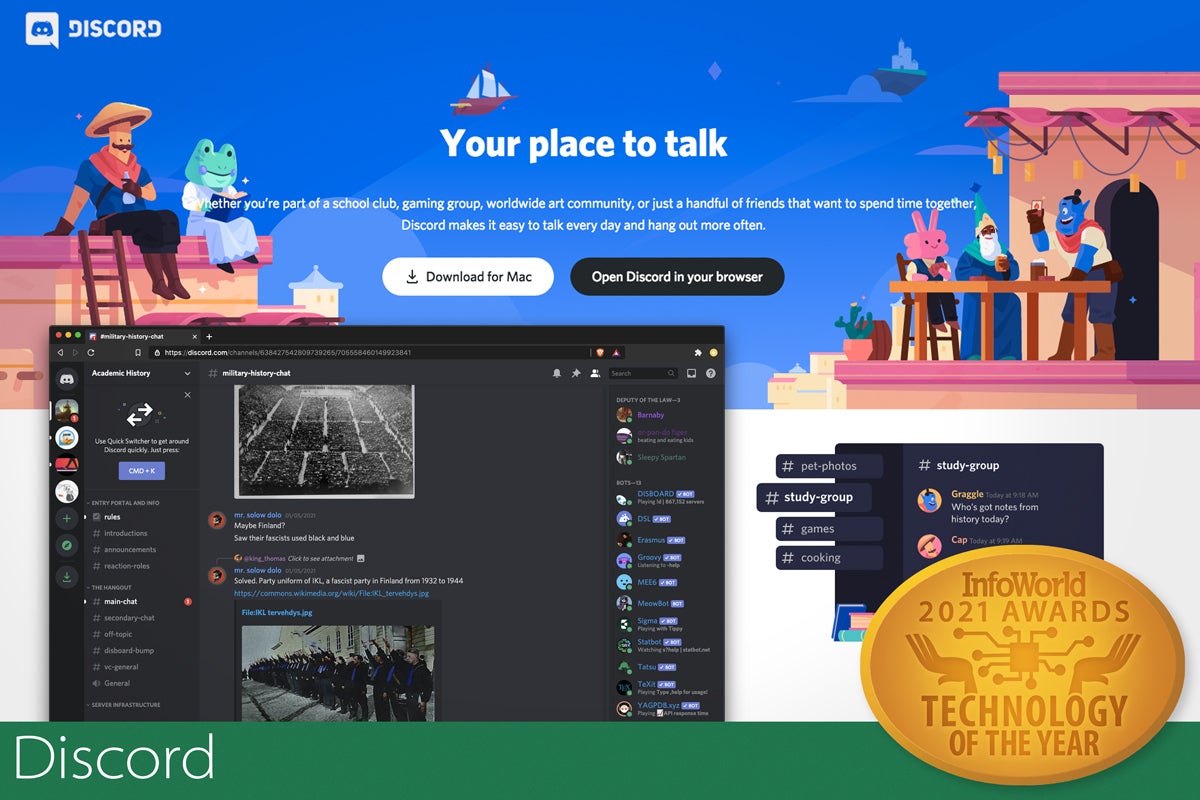
Discord
Discord is a breakaway star of 2020. Initially the domain of gamers and teenagers, it has become the way that tech communities and virtual conferences arrange communication and interaction. Discord is somewhat similar to Slack, except the video chat actually works, there are voice chat capabilities, and it has better moderation features. Basically, if you scaled Slack and did not assume a corporate hierarchy, it would look like Discord.
Aside from the channels with text, voice, and video chat, you can check out Disboard, a catalog of various Discord “servers” for any topic including history, JavaScript, or C# if that’s your bag. Discord cannot replace Slack for internal corporate communication due to a lack of things like Okta integration or the ability to restrict access to people with corporate email accounts. Despite those “shortcomings,” many companies are already using Discord for outreach and customer communities.
— Andrew C. Oliver
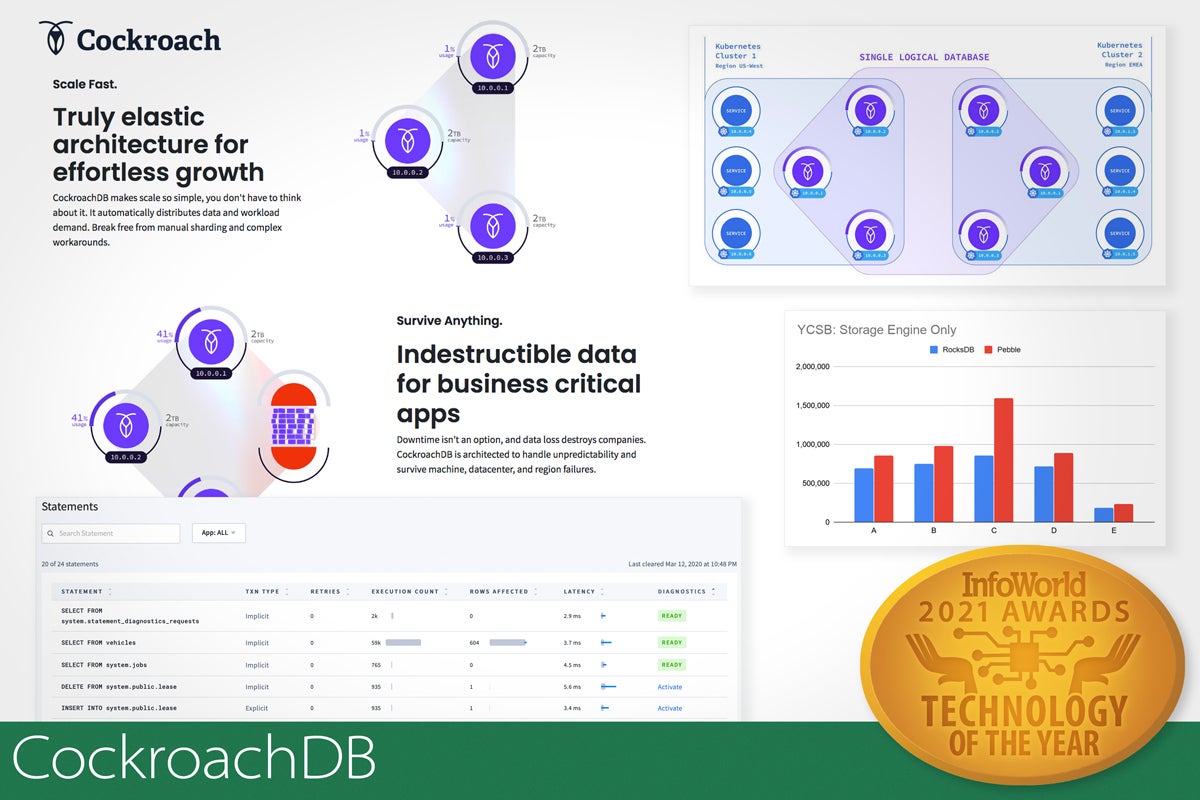
CockroachDB
Built by ex-Googlers who cribbed from the Google Cloud Spanner system, CockroachDB is a massively scalable, highly resilient, strongly consistent database system that is also PostgreSQL wire compatible, supporting dedicated spatial data types and indexes, with automatic rebalancing of data across nodes—no more manual sharding! Honestly, probably the reason we’re not all using it right now is that we’re all a little squeamish about cockroaches.
Cockroach Labs has taken the Elastic approach of heading off cloud companies by relicensing CockroachDB so it is no longer a pure open source product, and the company is offering its own CockroachCloud managed service for running CockroachDB deployments. However, the new “community” version of CockroachDB is well-supported by a comprehensive Kubernetes operator, so you should feel perfectly comfortable using it as a backing store for applications across the enterprise.
— Ian Pointer
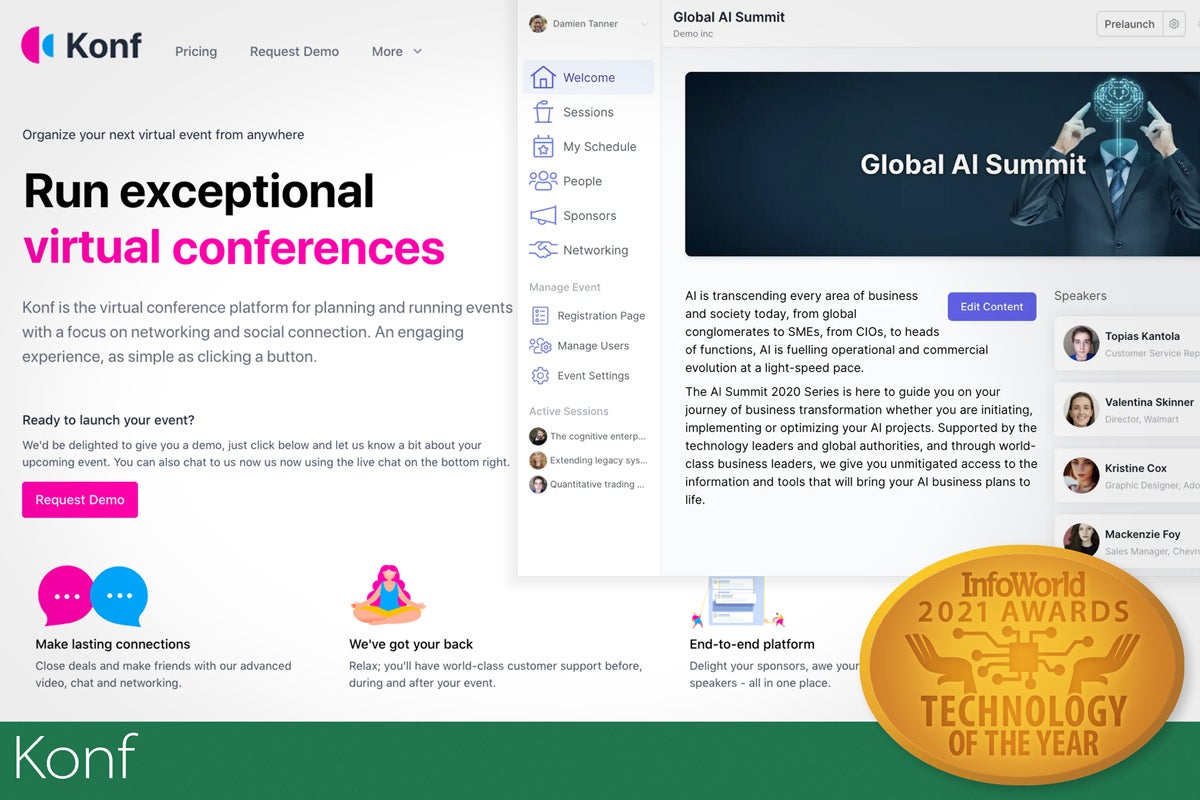
Konf
2020 was the year of “virtual conferences,” and with the vaccine rollout stagnating in most of the west, you can expect 2021 to continue the trend. Moreover, there is a real question of the best use of planetary resources here. Should we really be packing people in flying tubes and burning up the atmosphere just so that they can listen to a few talks and meet some people?
Konf is a cloud-based platform for planning and running virtual events. It allows both pre-recorded and live sessions along with interactions in a simple interface. Unlimited events start at $5k annually, and so far, most of the conferences I have attended that used the platform had the CEO of Konf in attendance. You simply cannot beat that level of service or support.
— Andrew C. Oliver
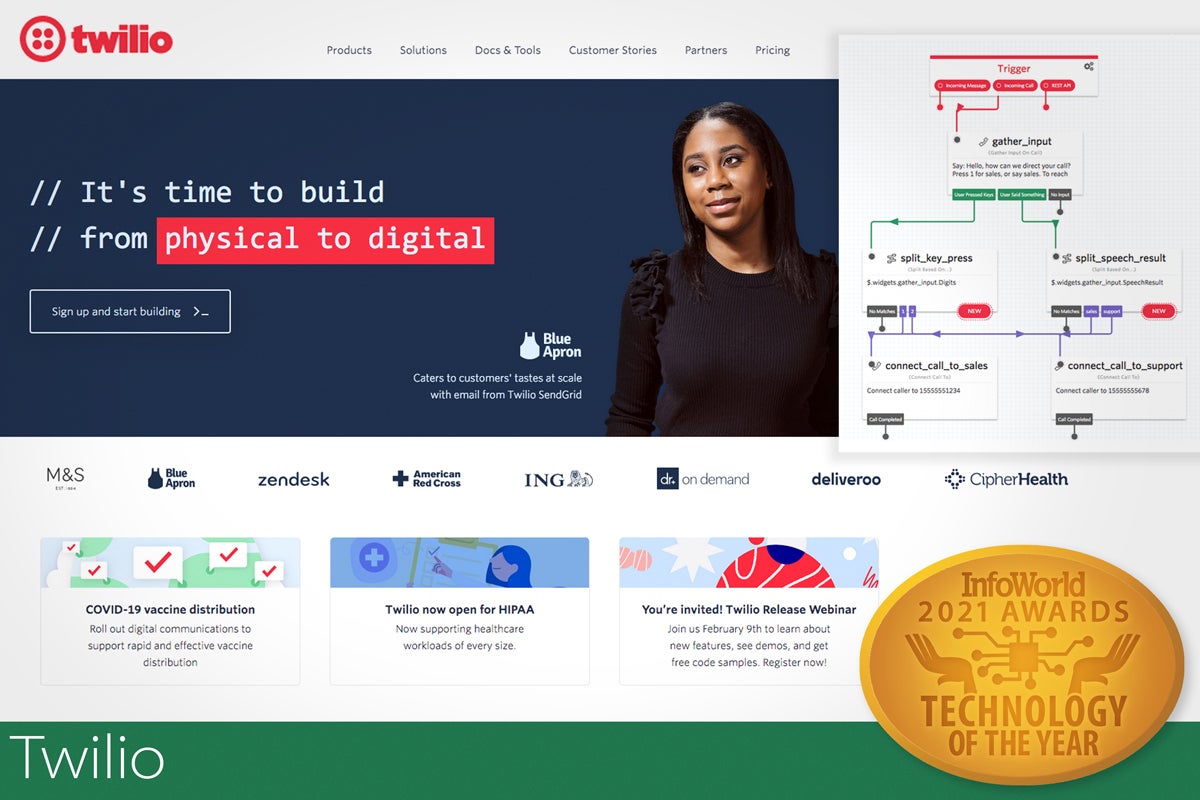
Twilio
What is Twilio exactly? Twilio is the duct tape and wire that let you put your virtual assistant on SMS or WhatsApp. Twilio is the goo you use to connect your ordering system to SMS. Twilio also allows you to build video chat apps, which an insurance company might use to create a telehealth service. Essentially, Twilio is a set of APIs for communication across SMS, voice, and video. In the era of calling everything “as a service,” Twilio is a CPaaS, or communication platform as a service.
Whether you are a JavaScript, Java, .NET, PHP, Python, Ruby, or mobile developer, Twilio lets you connect your apps to humans with simple APIs. The documentation is shockingly good, at least for getting started. Twilio Studio helps you compose communications apps and workflows with widgets as a sort of “low code” template or visual language for creating IVR style applications. But whether you drag and drop or write your own code, Twilio enables you to connect your applications to humans.
— Andrew C. Oliver
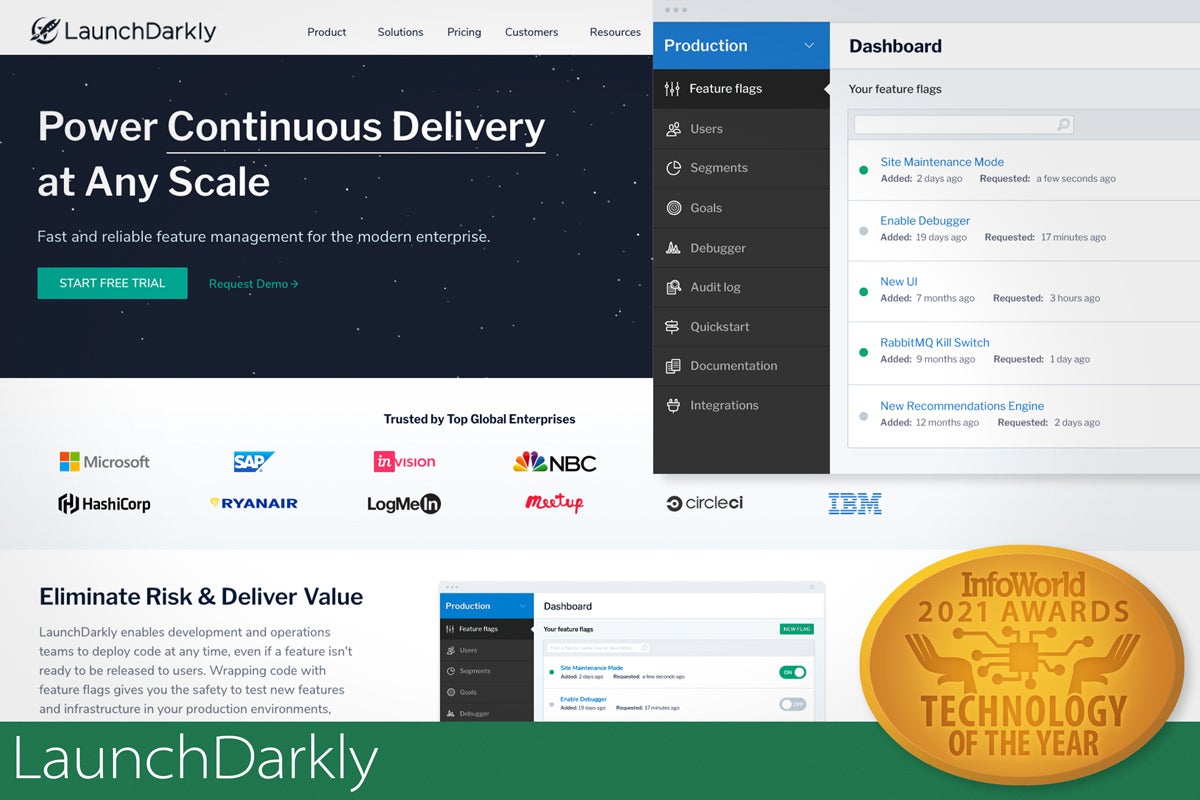
LaunchDarkly
LaunchDarkly enables software developers to wrap pieces of code in a feature flag. By using a feature flag, development teams can separate deployment from release, target different features to different users, quickly “kill switch” dangerous releases, and migrate software safely. At the core, feature flags are nothing more than if statements. Enabling and disabling them, managing them, and understanding which features are being used are the domain of this new category of product.
LaunchDarkly is the most-thought-of vendor in the feature management space. Rather than provide an addition to a continuous integration product, LaunchDarkly focuses strictly on feature management. With LaunchDarkly, your software product’s features are tied nicely into a dashboard console that allows administrators to switch them on or off at will.
— Andrew C. Oliver

Atlassian Confluence
Forward-looking IT shops recognize that wikis enable optimal experiences for knowledge sharing, documentation, and collaboration. Many of these shops select Atlassian’s Confluence as their primary collaboration and knowledge management tool because a hyper-connected wiki is much more useful and easier to maintain than amassing documents, spreadsheets, and presentations in file directories.
Atlassian has Confluence templates to help remote working teams including templates for meeting notes and project posters. Agile teams can draw on the stakeholder communication template, while IT operations team can turn to devops runbooks. If you’re using Jira Software, Jira Macro lets you integrate Jira Issues into your Confluence pages. And the Atlassian Marketplace has integrations with design and diagramming tools, so collaborations can include different content types.
As the applications, integrations, analytics programs, cloud architectures, devops automations, and other technologies in your organization increase in sophistication, ensuring that teams document systems and share knowledge becomes vital. And having a centralized, easy to use, interconnected knowledge management platform like Confluence becomes essential to ongoing success.
— Isaac Sacolick

SkySQL
SkySQL is a distributed SQL database from the people who brought you MariaDB, the open source fork of MySQL done by its creator. SkySQL offers transactional integrity across availability zones and all of the things we have come to expect from other distributed SQL offerings.
What makes SkySQL more interesting than those others? It combines columnar, relational, and analytical functionality into one database. Even if you are looking for a transactional database, sooner or later you will need to get data into your analytical store, and ironically that requires a big fat long-running query. In the cloud, copies of data across the network are pay-per-bit, and the ability to run multiple workloads on the same database becomes a major advantage.
SkySQL is wire-compatible with MySQL and MariaDB. If you grew up writing websites on MySQL, this is clearly the cloud offering for you. However, even if you are looking to migrate from Oracle Database or Microsoft SQL Server, SkySQL has much to offer in terms of scale and availability. For new applications, the advantage of one cloud database, as opposed to at least three, presents an opportunity to simplify one’s applications—and one’s life.
— Andrew C. Oliver
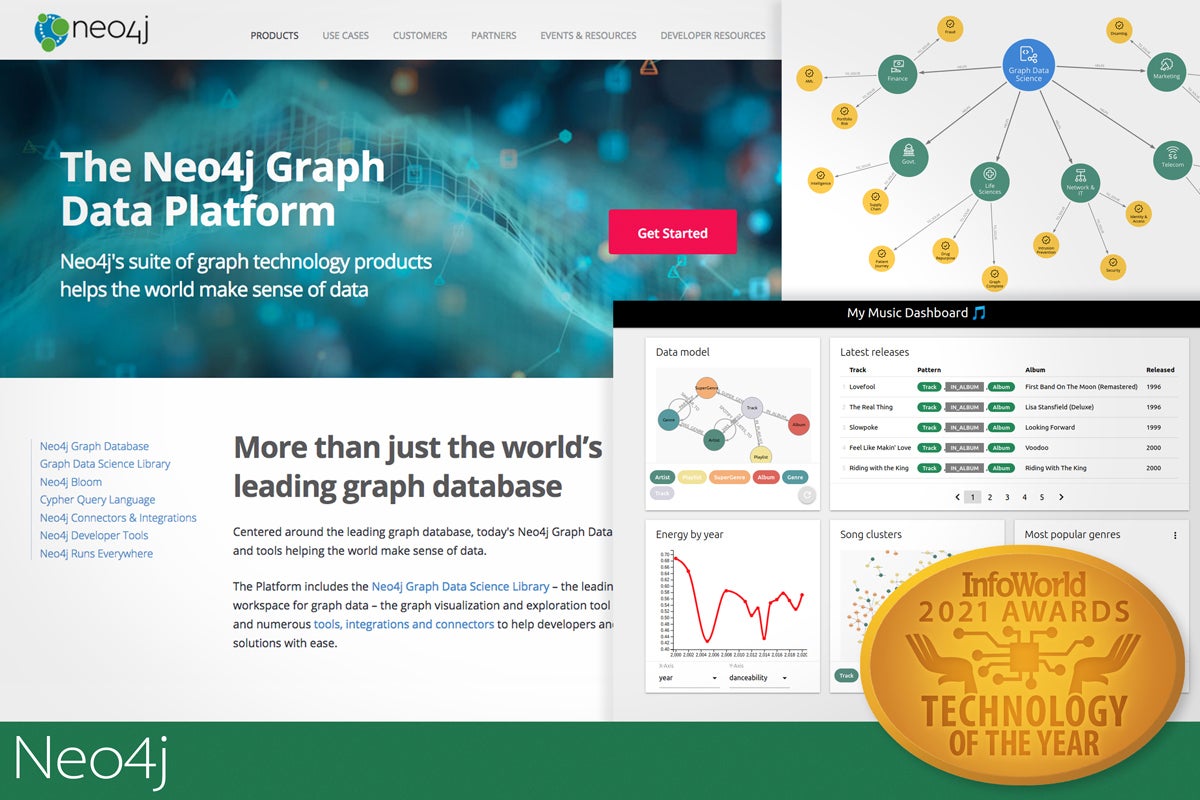
Neo4j
Neo4j remained in the graph database driver’s seat this year with a major release packed with security and scalability enhancements. New graph-specific, schema-based security tailors privacy controls to graphs, nodes, relationships, and properties—similar to row permissions in traditional databases. This builds on recent security updates like LDAP and Active Directory support, procedure-level access lockdowns, and full data encryption at rest and across the wire.
Enabling more responsive and resilient applications, Neo4j also added support for reactive programming. Reactive streams give client applications authority over data transfer, allowing them to reach up into the stack and use message-driven controls to dictate query response flows. Reactive sessions provide a far more practical approach than relying on async buffers, and deliver a more robust client experience.
The introduction of Neo4j Fabric brought parallel distributed query processing to Neo4j, with the database transparently managing query optimization and aggregations under the hood. Neo4j Fabric creates a virtual front end for simple client access but also opens the door to unlimited scalability and availability on the back end with minimal developer effort. And to cap off a busy 2020, the company launched Neo4j Aura, a fully managed cloud edition.
— James R. Borck
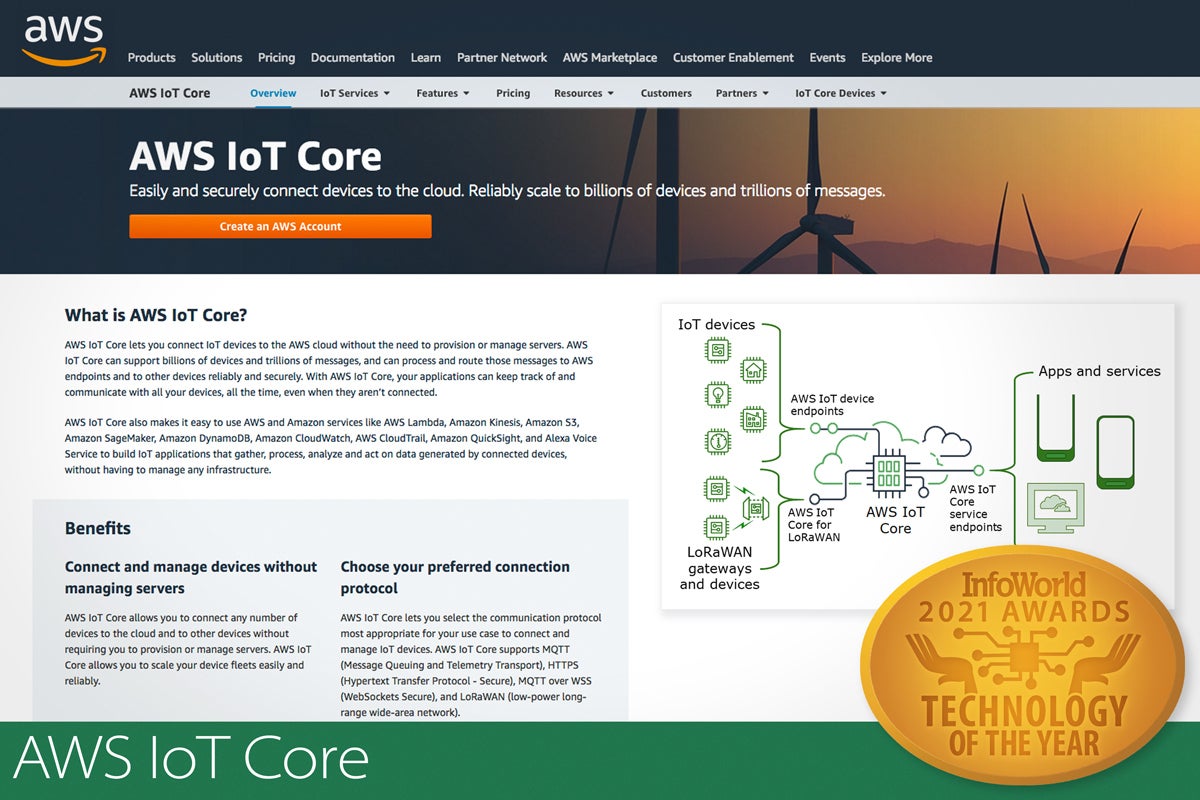
AWS IoT Core
AWS IoT Core is the most complete IoT (Internet of Things) solution among the cloud vendors. This makes some sense, given that Amazon is a logistics company at its core. Just glance at the IoT Core documentation for an idea of the depth and breadth of this offering. I haven’t seen such an extensive set of IoT tools from any vendor, let alone a cloud vendor who can manage the whole lot for you—and IoT is one of the domains where it can make a lot of sense to go cloud.
For developing IoT applications, AWS IoT Core provides a suite of offerings covering connectivity, data, and integration. On the infrastructure side, IoT Core provides device registration and tracking, rules-based processing, security, and messaging systems that speak the majority of IoT protocols. There are plenty of examples and tutorials, and the documentation is complete. For anyone contemplating a new IoT deployment today, I’d recommend having a good look at AWS IoT Core.
— Steven Nuñez
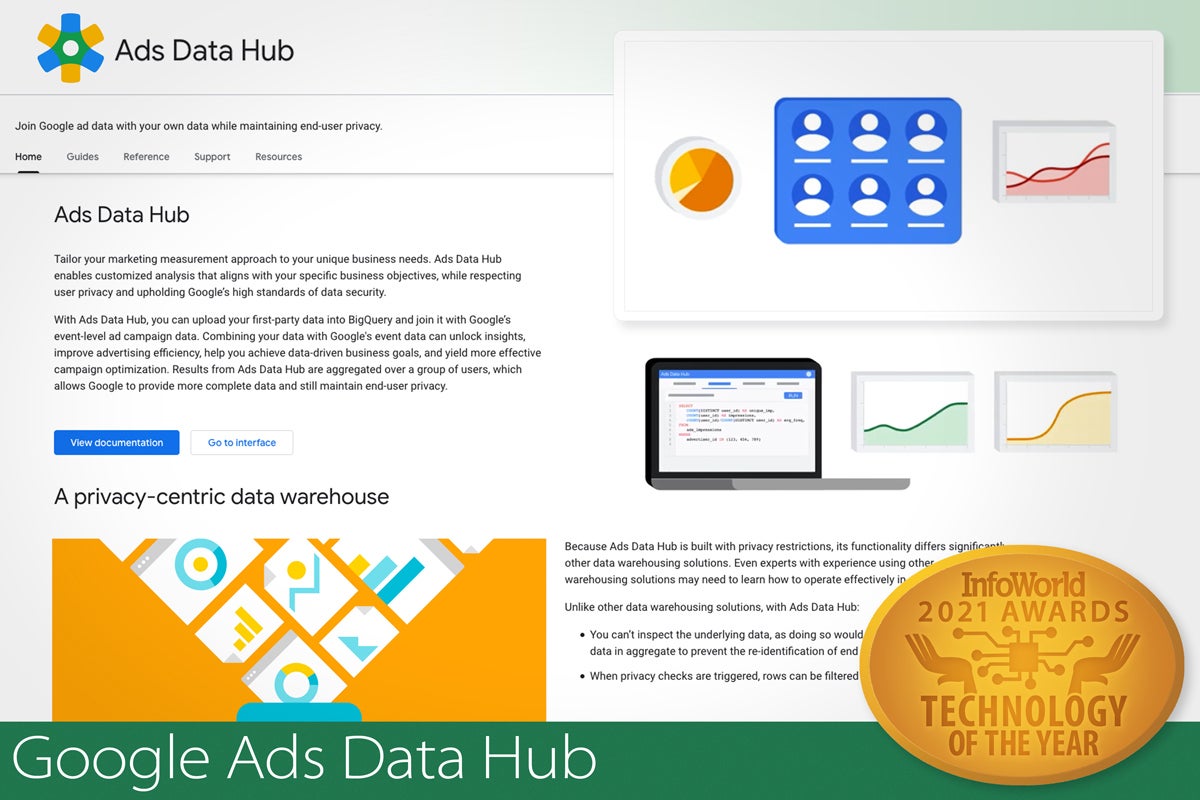
Google Ads Data Hub
Digital marketing is supplanting traditional marketing media about as fast as companies can make the switch. The new digital channels have upended the way marketers plan, execute, and monitor campaigns. After all, digital marketing is a form of data science, but an especially challenging one because the data on the interaction doesn’t exist in one place. Banner ads are recorded on a local system, ads served by third parties on another, social media views somewhere else. How does one get a complete picture?
Google Ads Data Hub is like a cloud machine learning platform, but for marketers. It is a cloud-hosted portal that gives digital marketers the ability to combine their own in-house customer and CRM data with Google’s view of the customer, across all Google properties. And it does so in a way that meets the privacy protection requirements of the various operating jurisdictions. Google Ads Data Hub isn’t a tool for the casual user, and you might need some help from Google. But given how far behind most digital marketing efforts are in the corporate world, Ads Data Hub offers a way to get results quickly, using data not available elsewhere.
— Steven Nuñez
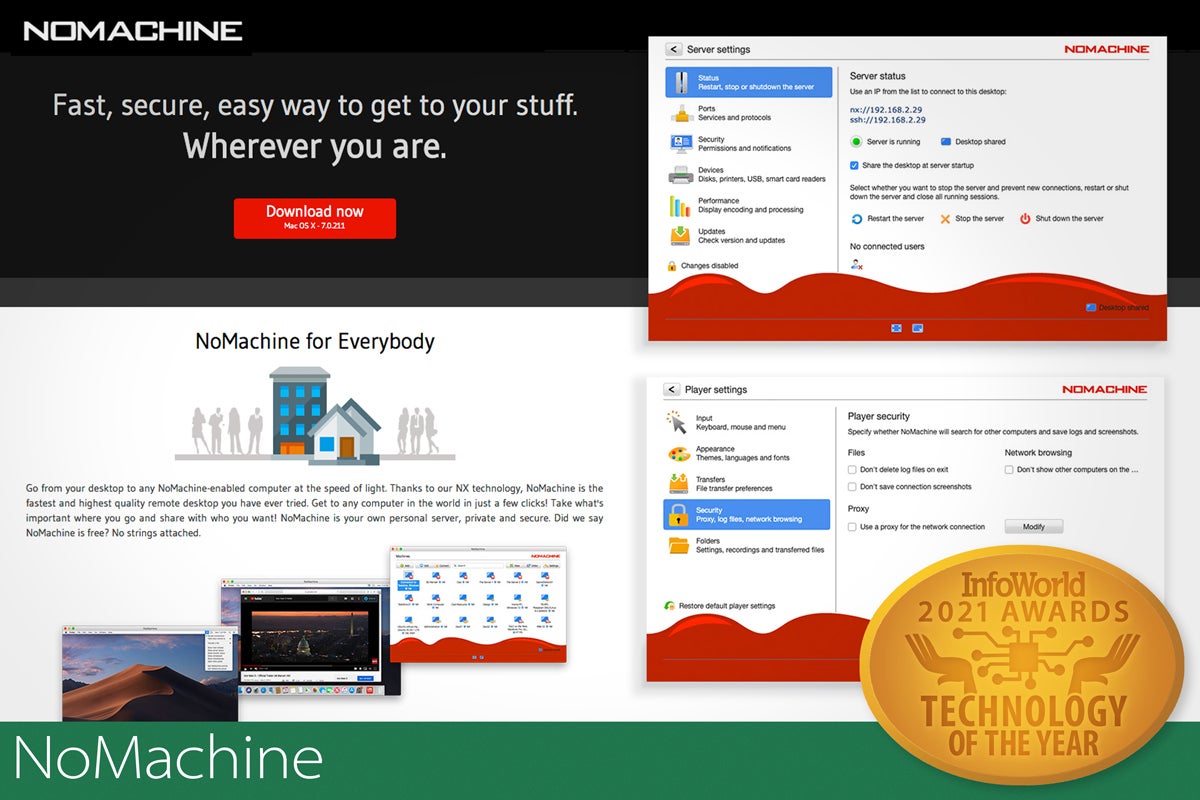
NoMachine
Most hard-core Unix jocks shun GUIs, instead favoring command line interactions with remote servers. And this makes sense. A command line is generally faster, and it’s certainly less bandwidth intensive. There are times, however, when using a GUI on a remote server is required, and for that you need a remote desktop application. There are many available, some free and some not. All offer varying degrees of device support, sound, file sharing, and other services, but none work better than NoMachine.
Started as a fork of a compressed protocol of the open source X Windows System, NoMachine was originally designed to allow X Windows programs to run over slow and unreliable dial-up connections. Although the source has since been closed, the commercial application is free for personal use, and it’s wonderfully fast and stable, even on connections half-way around the world or bounced off geo-stationary satellites.
Desktop quality in NoMachine is superb. The difference in desktop quality between NoMachine and most other offerings is noticeable, and NoMachine makes what is typically a frustrating experience a usable one. Frequently updated, and available for Windows, MacOS, and Linux, NoMachine may be the best all-around remoting solution available.
— Steven Nuñez

Fauna
Fauna is a serverless, distributed, NoSQL database that is truly different from the rest. Fauna supports robust absolute transactional integrity, and offers a multi-model interface that supports document, relational, graph, and temporal data sets from a single query. However,
Fauna’s consistency goes even further. Fauna is the first database to use the Calvin cross-shard transactional protocol, which allows for single-phase commits without reliance on clocks and without loss of consistency.
Fauna’s FQL is a functional query language that allows complex operations to be executed atomically. Fauna offers direct support for GraphQL and importing GraphQL schemas. While Fauna has a learning curve for those of us accustomed to relational data models and SQL, developers coming from a functional and document database background may find it intuitive—particularly if they are developing with GraphQL.
Fauna is a cloud database and the management console provides all of the functionality and simplicity one would expect. There is a large free tier for developers trying things out and sign-up is simple for anyone with a GitHub account.
— Andrew C. Oliver

Microsoft Azure AI
Microsoft Azure AI and Machine Learning Platform offers a wide range of cognitive services and a solid platform for machine learning that supports automated machine learning, no-code/low-code machine learning, and Python-based notebooks. All of the services are very solid, and almost all services have a free tier for development and test.
I was impressed by the ability of Azure custom cognitive services to do transfer learning with single-digit numbers of samples, for example Custom Vision and Form Recognizer. I was also impressed by the progress the Azure Responsible AI offerings have made, although I suspect that there’s more work to be done in that area.
One differentiator between Azure AI and Google Cloud AI is that Azure allows you to run cognitive service containers on premises, while Google currently lacks on-prem options. AWS does have an on-prem option, AWS Outposts, but the current version of the appliance is very expensive, and smaller appliances aren’t due until later in 2021.
Another differentiator is that Azure AI provides better data science options for customers without high technical skills, including automated machine learning and the Azure Machine Learning designer. The Azure Machine Learning designer is a no-code/low-code graphical interface for creating pipelines. While it resembles the old Azure Machine Learning Studio interface, it uses the much more robust infrastructure now available in Azure Machine Learning.
— Martin Heller
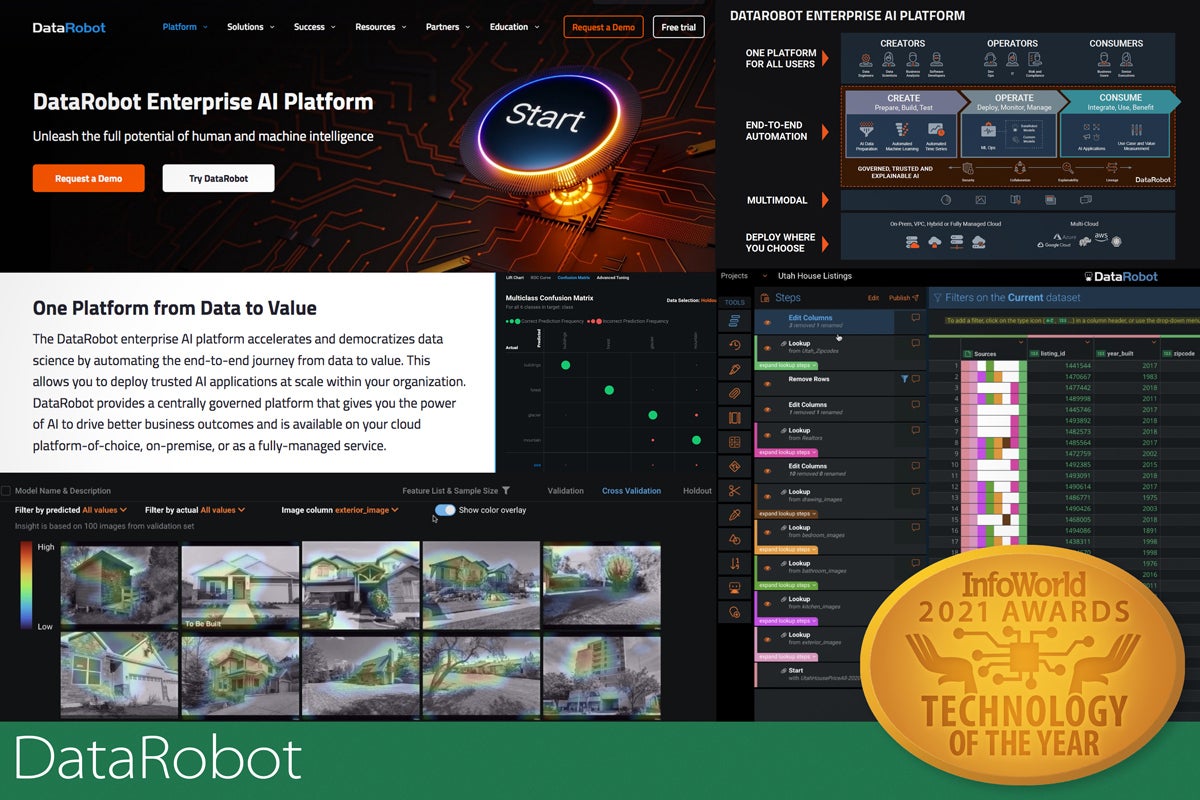
DataRobot
After years of growing through acquisitions, DataRobot has an end-to-end AutoML suite that takes you from data gathering through model building to deployment, monitoring, and management. The company has paid attention to the pitfalls in AI model building and provided ways to mitigate many of them, such as safeguards against bad data and bad predictions, and detection of model drift and data drift over time. DataRobot can save your analysts and data scientists a lot of time.
I was surprised and impressed to discover that DataRobot can run on CPUs without accelerators and produce models in a few hours, even when building neural network models that include image classification. I was also surprised and impressed that DataRobot includes geospatial, time, and image data in AutoML models right along with tabular data, which enables more accurate models.
— Martin Heller
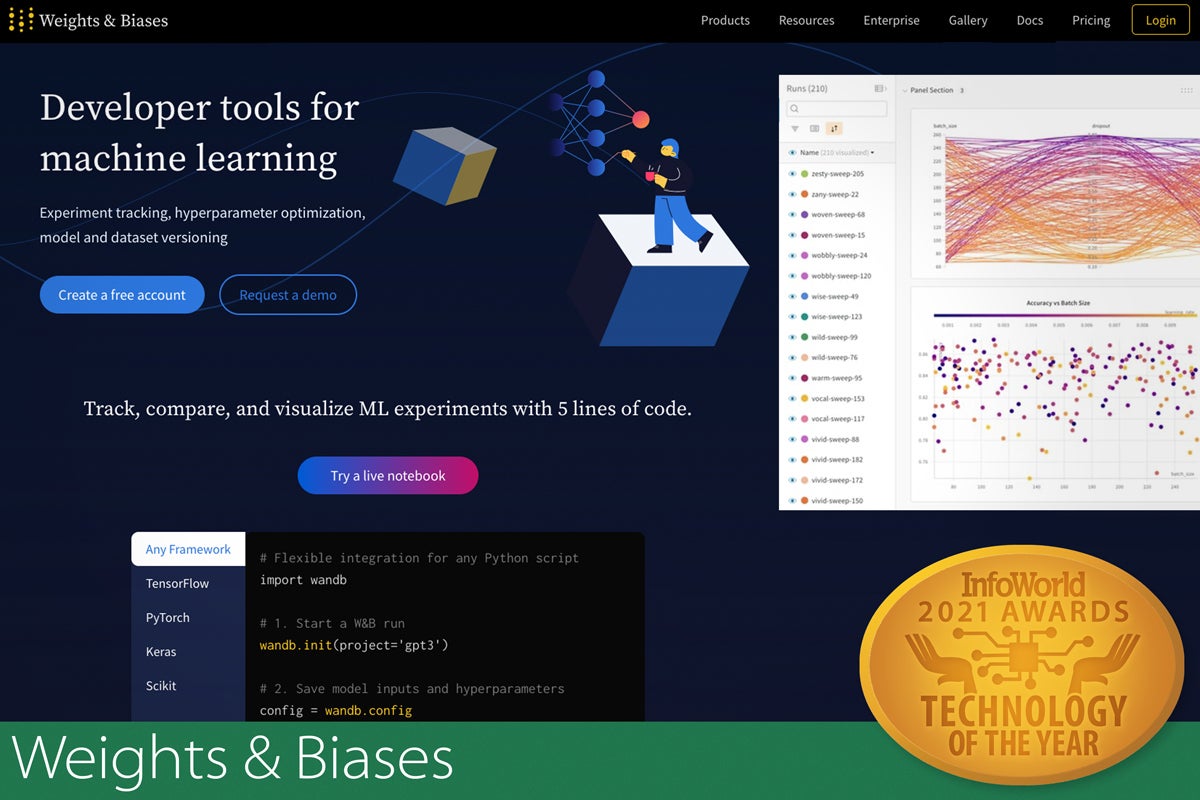
Weights & Biases
In a white-hot market for machine learning support tools, none are hotter than Weights & Biases. A set of tools for tracking, visualizing, and comparing the results of your machine learning experiments, W&B has out-of-the-box integration with almost every popular machine learning library (plus it’s easy enough to add custom metrics), and you can use just as much of it as you need.
Do you just want an enterprise, multi-user, turbocharged version of TensorBoard? You can do that. Or you can use W&B to control and report on hyperparameter tuning, or to contribute to W&B’s public benchmarks on various machine learning problems, or even to build reproducible training pipelines on versioned datasets and models.
By taking on some of the most important, if less celebrated, parts of machine learning development and deployment, Weights & Biases has become a vital tool in cutting-edge AI companies like OpenAI and Nvidia. If these companies are using W&B to support their data science work, then why aren’t you?
— Ian Pointer
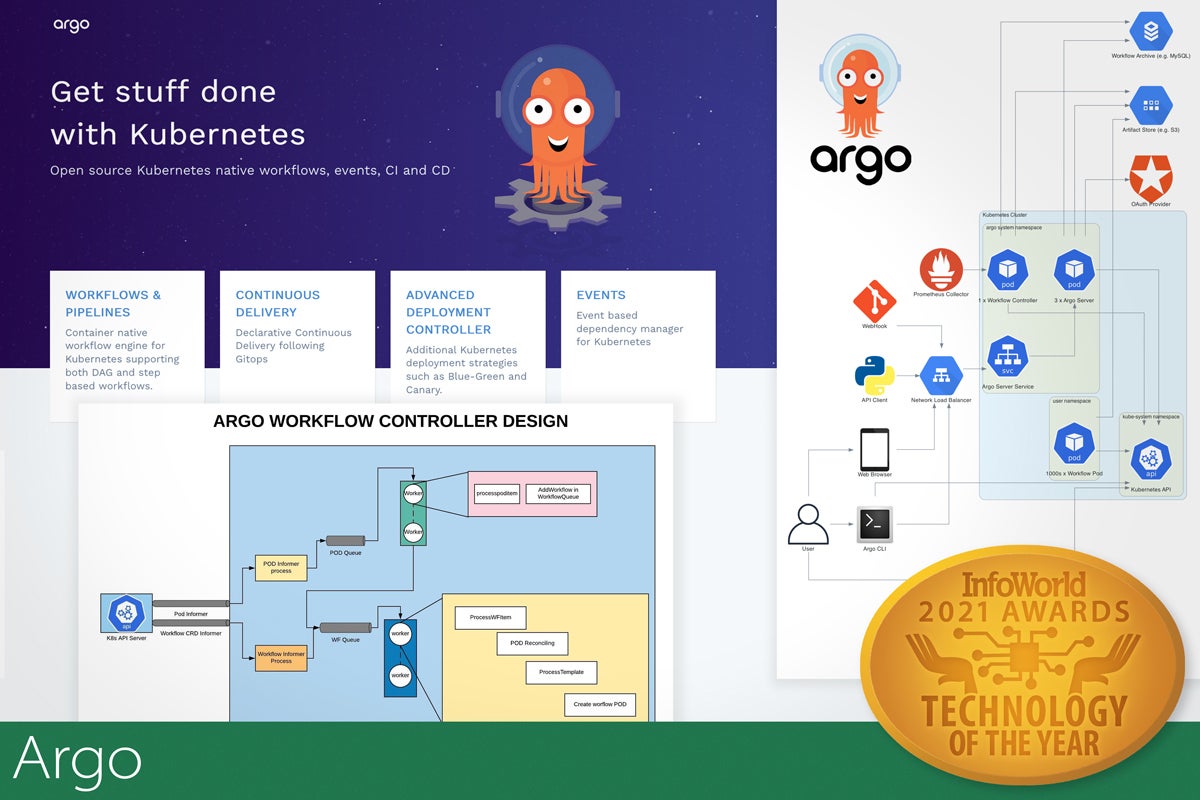
Argo Project
While Apache Airflow may be the giant in the workflow engine space today, keep an eye on the Argo Project. Brought to us by Intuit, after acquiring Applatix in 2018, Argo is designed from the ground up to work with Kubernetes. Argo combines a comprehensive workflow engine with an events system and a CI/CD platform, and you can take as much or as little of the project as you need to meet your cloud-native needs. The workflow engine allows direct interaction with Kubernetes objects, along with Docker-based steps. Now accepted as a Cloud Native Computing Foundation incubator project and with a simple Helm chart to get going, Argo should be the first choice for all of your Kubernetes-based workflow needs.
— Ian Pointer

Appian Low-Code Automation Platform
Appian expanded its product portfolio early last year by acquiring the Jidoka RPA robotic process automation platform. The addition complements an already impressive mix of process management, low-code development, and AI-based document processing capabilities.
RPA is a natural and powerful addition to process management workflows. Appian’s new cloud-based bots can be run on a schedule or threaded into event-driven processes—to fire off a response to an inbound information request, for example, or to route case management tasks to humans for exception handling.
Appian’s developer tools are built for speed. The modeling IDE lets you visually sequence activities across a variety of endpoints—tapping external legacy and third-party systems, or AI services for tasks like smart-form data extraction. Low-code tooling and visual query wizards accelerate smart form creation and web app development.
Operational efficiency requires BPM that is augmented with automated intelligent processing. Appian’s comprehensive suite delivers that and more.
— James R. Borck
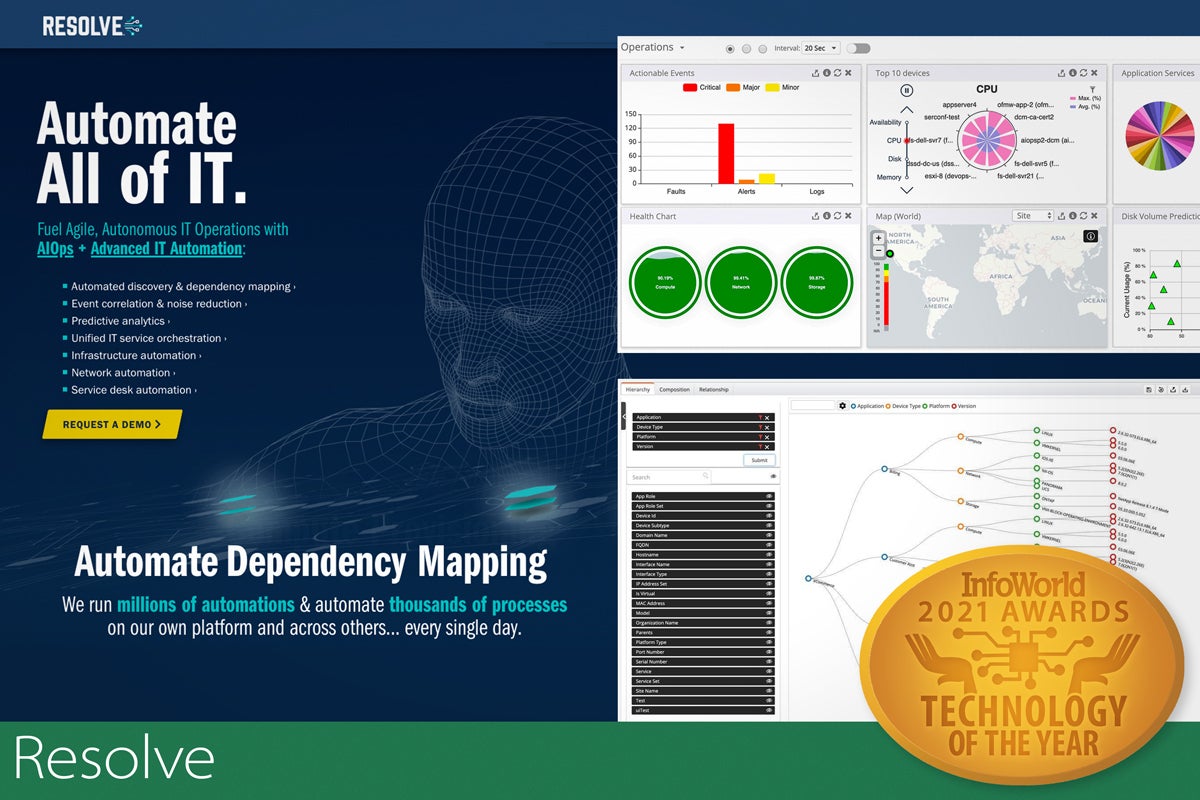
Resolve IT Automation and AIOps Platform
An IT automation Swiss army knife and AIOps system, the Resolve platform integrates several capabilities that IT organizations often buy separately: AIOps to aggregate monitoring alerts, agentless discovery and dependency mapping to maintain CMDBs across hybrid clouds, and a low-code automation platform with thousands of prebuilt automations. It’s an end-to-end “hyperautomation” platform that connects operational insights to actions.
Resolve’s discovery and dependency mapping can be a game changer for IT departments that have struggled to maintain CMDB data quality and to integrate CMDBs with ITSM processes. Resolve integrates with hundreds of systems including Cherwell and ServiceNow for ITSM, Splunk and Nagios for monitoring, Cisco and FireEye for security, and AWS and Azure in the cloud.
Data from monitoring tools feed Resolve’s AIOps algorithms, which trigger automations across a growing set of IT and enterprise platforms. Resolve runs millions of automations and automates thousands of processes every day, delivering significant ROI for customers. The Resolve platform is also the backbone for several MSPs and CSPs.
— Isaac Sacolick
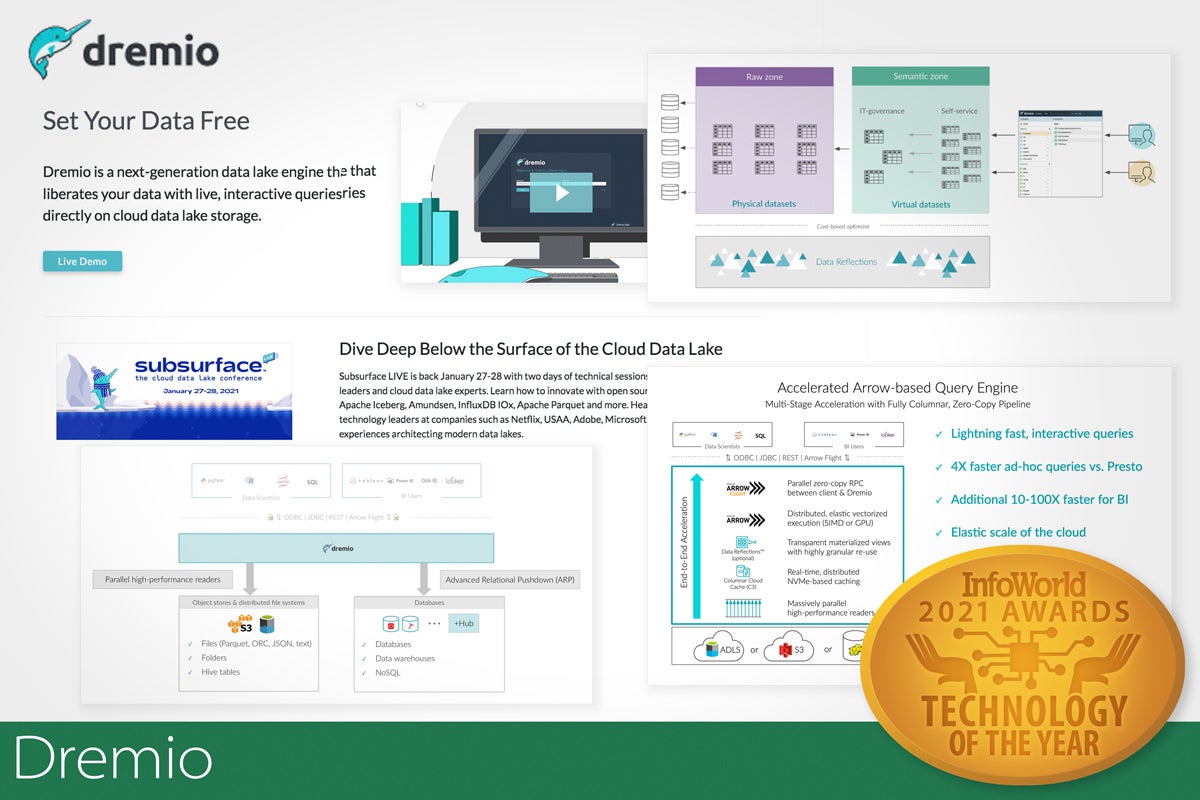
Dremio
Dremio does much more than serve as a bridge between disparate data lake formats and BI visualizations. Along with the broad access to structured and unstructured data sources, this data lake query engine provides high-speed columnar storage and execution and a self-service portal that allows analysts to explore, shape, and analyze data according to their own needs, without having to rely on IT.
One-button integration makes tapping data from BI tools like Tableau and Microsoft Power BI a breeze. From Azure Data Lake Storage or Amazon S3 objects, to Hadoop and Postgres, even to Snowflake and Salesforce, Dremio serves up all of your data, in-place, with a responsiveness that makes queries of enormous, distributed datasets feel like local queries.
Dremio’s important differentiator is Apache Arrow, a purpose-built open source framework that sidesteps the performance impact of serialization methods during data interchange and enables in-memory columnar processing that accelerates analytics workflows. Thanks to Arrow, transparent caching, and a slew of optimizations, Dremio delivers fast, interactive, wait-free analytics even on huge datasets.
— James R. Borck
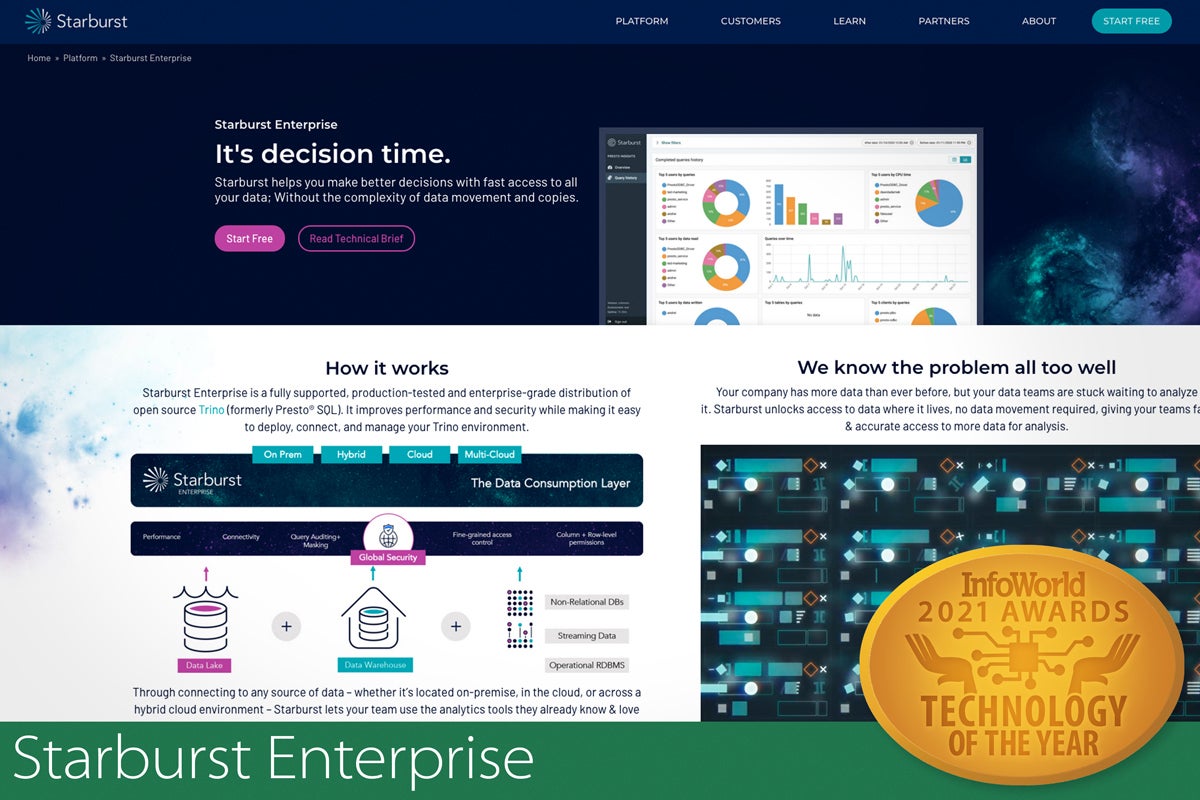
Starburst Enterprise
Starburst Enterprise is the hands-down leader when it comes to tapping disparate, distributed datasets for analytical queries. Its extensive adapter library lets you plug most any data source—Amazon S3, Google Cloud Storage, Hadoop, Microsoft Azure Data Lake, MySQL, transactional systems like Delta Lake, etc.—into any ODBC/JDBC accessible BI tool, without the heavy lift of an ETL pipeline.
With Starburst Enterprise, you can deploy almost anywhere—on all major cloud services, virtual machines, even bare metal. You also have plenty of extensibility and customization options, which come by way of a healthy HTTP-based API, command line interface, and JDBC drivers that can plug your apps directly into the power of Starburst’s Trino parallel query engine (formerly known as PrestoSQL).
And because Starburst Enterprise is built on an open source Presto distribution, you’ll find a wealth of community development and marketplace support. Starburst may not have the raw, in-memory speed of Dremio, but it’s a solid performer—more than sufficient for most use cases—and has many more adapters.
— James R. Borck
Copyright © 2021 IDG Communications, Inc.
